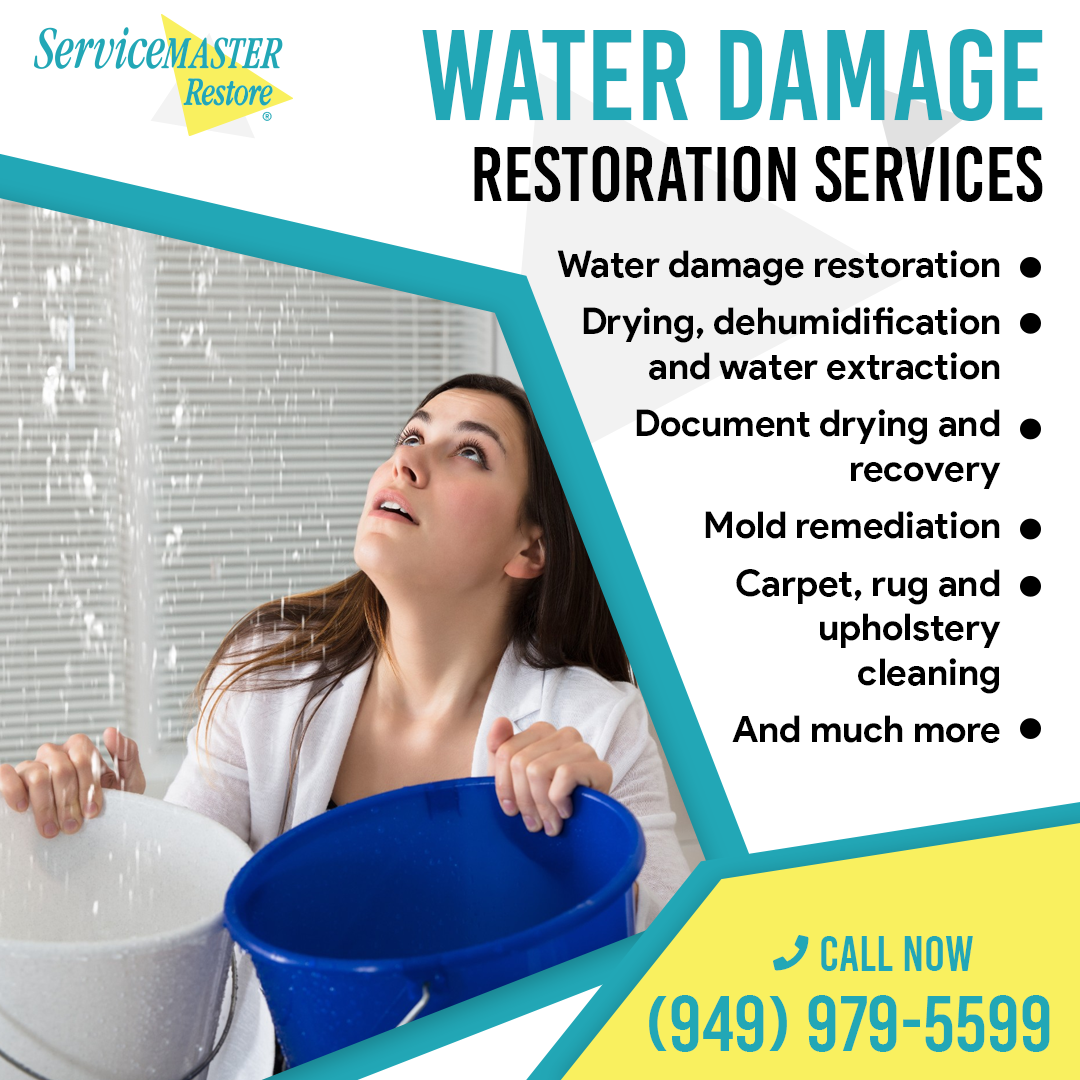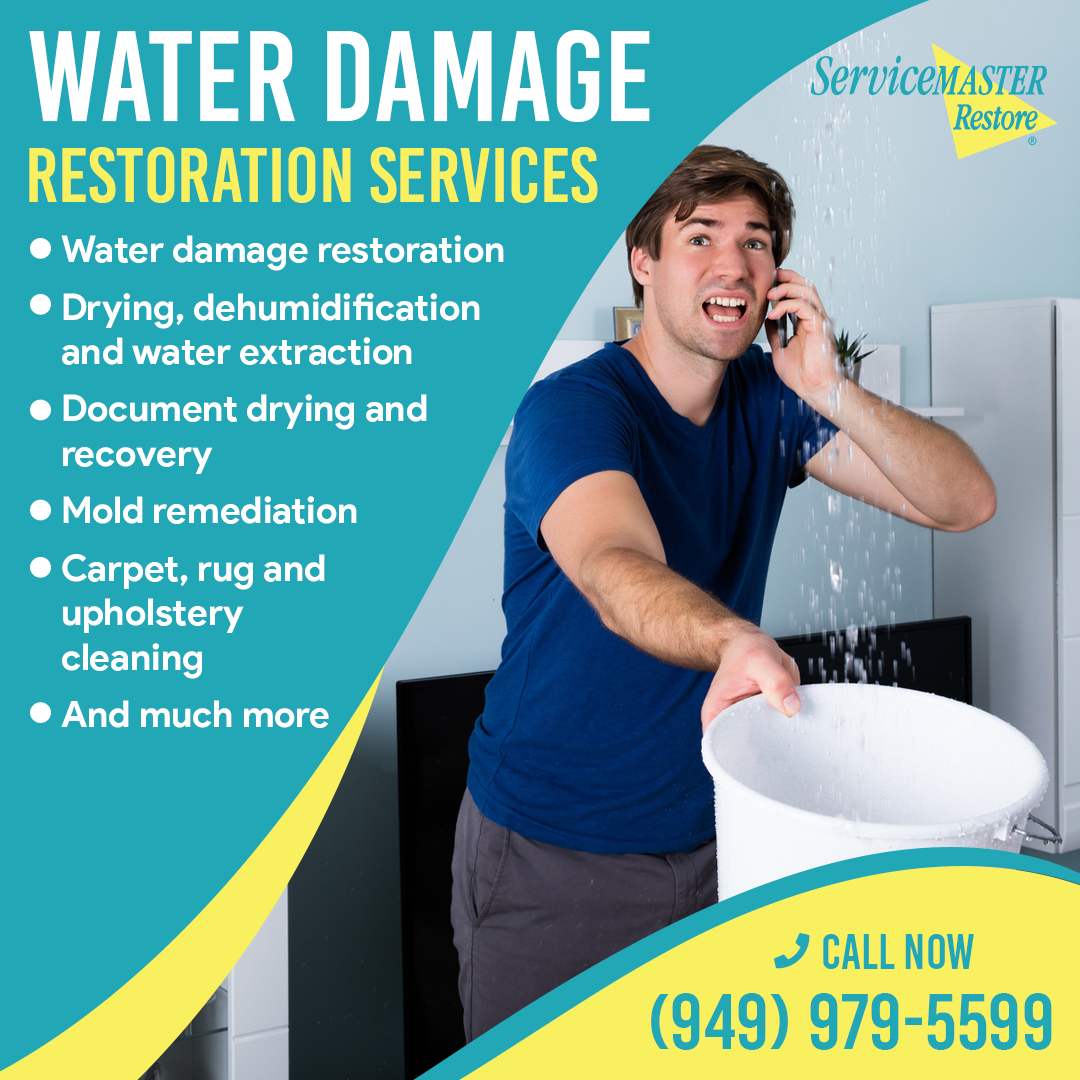At ServiceMaster Advanced Restoration, the goal is to quickly and efficiently restore the property to its pre-damage condition. The job is not complete until the customer is satisfied. The ServiceMaster Advanced Restoration team of water damage restoration experts are IICRC certified, have a wide range of experience, and are equipped to remove and restore the damage caused by fire, water, or mold.
About 100,000 water damage incidents occur every week in the US. Every few seconds, a washing machine supply line bursts, a dishwasher leaks, a hot water heater floods a house, or a pipe bursts in the ceiling. The home is a water damage disaster waiting to happen. The kitchen is the most vulnerable room in the home since the dishwasher, refrigerator, garbage disposal, ice maker, and water filtration system are clustered in the kitchen. If the laundry room is nearby, add the washing machine and its supply lines to the list of potential water damage causes.

Consider a situation in which a child leaves a bathroom faucet running. The sink stops up and overflows. Every sixty seconds, two to three gallons of water spills over the edges of the sink onto the floor. An hour later, when the child remembers they left the water running, 150 gallons of water have flooded the bathroom and adjoining bedrooms. A burst pipe can flood the basement or crawl space with anywhere from six to twelve gallons of water per minute. The water has to go somewhere; then, it has to be removed.
The homeowner would be amazed if they realized how much water can be absorbed by carpet padding, cushions, area rugs, and books and magazines stacked on the floor. Given enough time, large amounts of water can wick into furniture, draperies, sheetrock, baseboards, and flooring. If water mitigation — the removal of water from a home or business — does not begin immediately, further absorption can lead to massive secondary water damage. When secondary water damage occurs, replacement may be required. Replacement is much more expensive and time-consuming than drying, dehumidifying, disinfecting, and deodorizing.
What to do when water damage occurs
- Remove some of the water by mopping and blotting the affected area.
- Remove wet area rugs and other floor coverings that are not attached to the floor.
- Lift curtains or draperies off the damp floor. Loop them through a coat hanger, and place the hanger over the curtain rod.
- Wipe wet furniture. Prop up wet furniture cushions to allow for even drying. Place aluminum foil under furniture legs.
- Move documents, paintings, photos, and art objects to a safe, dry location.
- Keep books on bookshelves, and pack them tightly to avoid warping of the pages until the restoration professional can begin the specialized drying process.
- Open cabinet doors, drawers, and closets to enhance drying.
What not to do when water damage occurs
- Do not enter a room or area with standing water until the electricity has been turned off. Electrocution is a real danger when standing water is present. If the person shocked has a pacemaker or implantable cardioverter-defibrillator (ICD), complications could arise from the jolt.
- Do not use a household vacuum cleaner to remove water from floors or carpets. Household vacuums are not designed to be wet vacuums, and the water and moisture will ruin the equipment. Electric shock is a possible hazard, as well.
- Do not lift tacked-down carpet without professional help. Lifting heavy materials such as water-logged pillows, cushions, or carpet can cause back injuries. Removing wet carpet and padding without causing damage requires special skill and strength. Most of the water is absorbed by the padding, not the carpet. In some cases, carpet and padding can be dried in place.
- Do not use electrical appliances while on or near wet flooring or carpeting. The issue of electric shock comes into play.
- Do not disturb visible mold. Disturbing mold can inject additional mold spores into the air, which can cause allergic reactions, exacerbate asthma attacks, and stimulate mold growth. Leave visible mold alone. Do not make a bad situation worse.
- Do not remove books from shelves. Leave books on the shelves, but pack them tightly so that the pages and covers do not warp. A skilled ServiceMaster drying technician can work wonders with wet or moist books and documents.
- Do not turn on lights, fans, or other ceiling features if the ceiling is wet. Stay out of rooms where ceilings are sagging.

In serious water damage incidents where both the water level and the stress levels are high, the best course of action is to call ServiceMaster Advanced Restoration. The customer service representative will gather basic information and schedule the team from ServiceMaster Advanced Restoration. Trained, certified, and well-equipped property damage restoration specialists arrive on-site and promptly begin the water damage mitigation and restoration process.
For more information about water damage restoration, visit the ServiceMaster Advanced Restoration website at servicemasteradvancedoc.com. Contact the office by phone at (949) 537-1005.



No comments:
Post a Comment